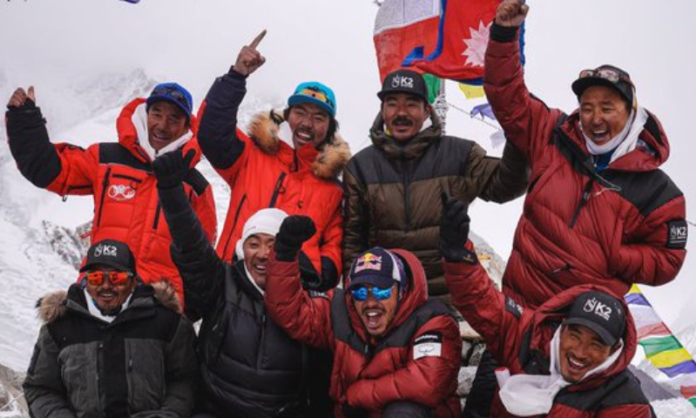Web Desk
A team of Nepalese climbers on Saturday made history after becoming the first to surmount K2 in winter, according to a trekking company leading one of the expeditions.
Dozens of mountaineers have been competing over the past few weeks to summit the world’s second highest mountain, the last peak above 8,000 metres to be topped in wintertime.
According to Radio Pakistan, the team was led by Chhang Dawa Sherpa.
“We did it,” said Seven Summit Treks, the trekking company which led the ascent, in a statement on Twitter.
“The Karakoram’s ‘savage mountain’ [has] been summited in [the] most dangerous season: winter. Nepalese climbers finally reached the summit of K2 this afternoon at 5pm.”
According to English newspaper, Daily Dawn, Gilgit-Baltistan (GB) Chief Minister Mohammad Khalid Khursheed Khan has also congratulated the team on their K2 ascent and expressed his hopes that GB mountaineer Mohammad Ali Sadpara and his son Sajid Ali Sadpara, among others, would reach Camp 3 soon.
16 Jan 2021
WE DID IT, BELIVE ME WE DID IT- JOURNEY TO THE SUMMIT NEVER DONE BEFOREThe Karakorum's 'Savage Mountain' been summited in most dangerous season:WINTER
Nepalese Climbers finally reached the summit of Mt. K2 (Chhogori 8611m), this afternoon at 17:00 local time. pic.twitter.com/O530X3WgKh— Seven Summit Treks
(@sst8848) January 16, 2021
He further said he wished for the continued success of the country’s mountaineers.
Since the maiden attempt in 1987-1988, just a handful of winter expeditions have been attempted on the storied 8,611-metre mountain in the Karakoram range along the Chinese border.
None had gotten higher than 7,650 metres until Saturday when good conditions allowed the climbers to push ahead.
This winter an unprecedented four teams totalling around 60 climbers converged on the mountain, more than all the previous expeditions put together.
The 10 Nepalese climbers had earlier been spread across the different teams, but formed a new group in order to claim the feat in Nepal’s name.
Known as the ‘savage mountain’, winds on the peak can blow at more than 200 kilometres per hour and temperatures can drop to minus 60 degrees Celsius.















